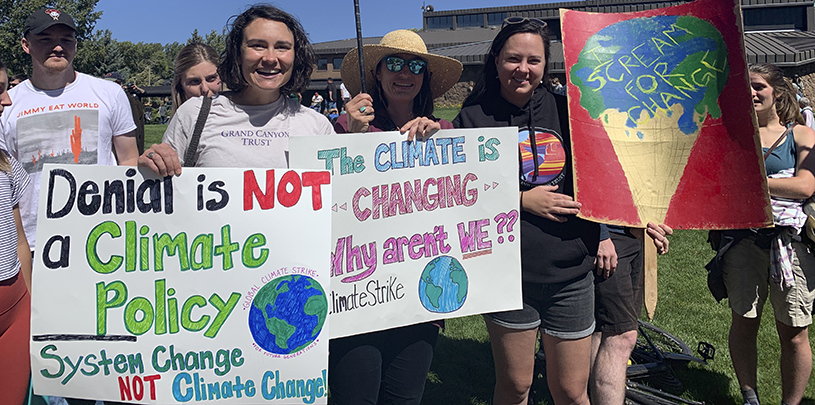
 by Megan Kelly, Energy Manager
by Megan Kelly, Energy Manager
President Biden seems to understand that climate change is one of the most consequential threats of our time, and his administration is working to tackle it. In his ambitious climate plan, Biden promises to ensure the U.S. reaches net-zero emissions by no later than 2050, and, on his first full day in office, he recommitted the United States to the Paris Climate Agreement.
While environmentalists across the globe are celebrating these bold moves, many might be left wondering — what does this all mean? And if the administration is doing all of these big things, does smaller-scale climate action even matter? Short answer: yes.
Net-zero emissions, also known as “carbon neutrality,” refers to a net balance of zero greenhouse gas emissions. Reaching net-zero emissions means reducing emissions as much as possible, and then compensating for what can’t be reduced through other measures such as carbon offsets, renewable energy certificates, or even carbon removal. The cool thing about net-zero emissions is that as a goal, it can be reached at various scales — global, national, state, city, household or office space, all the way down to the individual.
The Paris Climate Agreement is a legally binding international treaty that commits each country that signs on (197 total, so far) to lowering greenhouse gas emissions enough to avoid the most dramatic effects of climate change.
At the center of the Paris Climate Agreement are nationally determined contributions (NDCs). NDCs hold countries accountable for their climate commitments by outlining how those countries will reduce national emissions. So once the NDCs are established for the U.S., the U.S. will be obligated to see them through.
So, let’s throw it back for a second. You’re in high school. Your parents are gone for the weekend, and you’re home alone. What started as having five friends over for a movie night turns into a party for your entire high school class that resembles parties from the best '90s movies. Your parents are coming home later today, and every room in the house is a disaster. What do you do? Rather than try to take on cleaning the whole house yourself, you have an idea — if each friend chips in, the job will be completed much faster.
Apply that tactic to climate change. While climate change is a global challenge, each country committing to its own NDCs will help collectively chip away at the problem. And as the Biden administration implements policy at the federal level, there are plenty of opportunities to contribute to emissions reductions on a smaller scale.
Just as your friends helped get your parents’ house back in order, smaller efforts to reduce emissions add up. Take the city of Flagstaff, Arizona for example. Not only did the city declare a climate emergency, it also pledged to achieve community-wide carbon neutrality by 2030. Now imagine that other cities see Flagstaff doing this, and develop the same goals — what an impact that could have!
State policy can also have a ripple effect, so it is important to speak up in support of state policy for climate action, and in opposition to efforts that take us backward, like recent Arizona State House and Senate bills that would strip the Arizona Corporation Commission of its authority to pass renewable energy standards or make energy rules that would lead to 100 percent clean energy. If passed, these bills will make it extremely difficult for Arizona to reduce greenhouse gas emissions. And as we now know, even state-level emissions reductions contribute to the bigger picture.
While large-scale change is extremely important to reduce greenhouse gas emissions and avoid rising temperatures, heatwaves, drought, declining water supplies, catastrophic wildfires, and other severe impacts of climate change, smaller-scale actions add up.
If you’re curious to see how greenhouse gas emissions play out on the Colorado Plateau, check out our newly published greenhouse gas inventory overview for the region. And if you’re looking for ways to engage in climate work, sign up for our action alerts ›
Did you know the Colorado River used to be called the Grand River? Learn about the name change and more fun facts about this hardworking river.
Read MoreChallenging conditions have endangered, threatened, or imperiled these five native fish in the Grand Canyon.
Read MoreBeneath the bathtub ring at Lake Powell, native plants are flourishing, cultural sites are resurfacing, and whitewater rapids are returning.
Read More